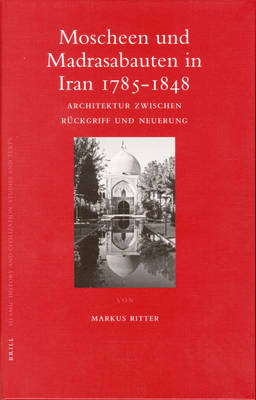Islamic History and Civilization
1 primary work
Book 62
The book studies late 18th to mid-19th century Iranian architecture in mosques and madrasas, entering a widely unknown architectural period.
The introduction places the buildings as religious and political architecture in the context of the early Qajar monarchy and the rising urban elites. The main part analyses architectural development within a formal typology. Stylistic characteristics are defined, and formal groups are interpreted with regard to patron circles. The remarkable combination of tradition and innovation is discussed as a phenomenon of 18th/19th-century Iran and with a view to general trends of the period.
The thorough catalogue including buildings visited by the author and supplementary material, provides the reader with descriptions, inscription readings, historical data and textual sources, and is illustrated with photographs and plans on 200 plates (16 in colour).
The introduction places the buildings as religious and political architecture in the context of the early Qajar monarchy and the rising urban elites. The main part analyses architectural development within a formal typology. Stylistic characteristics are defined, and formal groups are interpreted with regard to patron circles. The remarkable combination of tradition and innovation is discussed as a phenomenon of 18th/19th-century Iran and with a view to general trends of the period.
The thorough catalogue including buildings visited by the author and supplementary material, provides the reader with descriptions, inscription readings, historical data and textual sources, and is illustrated with photographs and plans on 200 plates (16 in colour).
